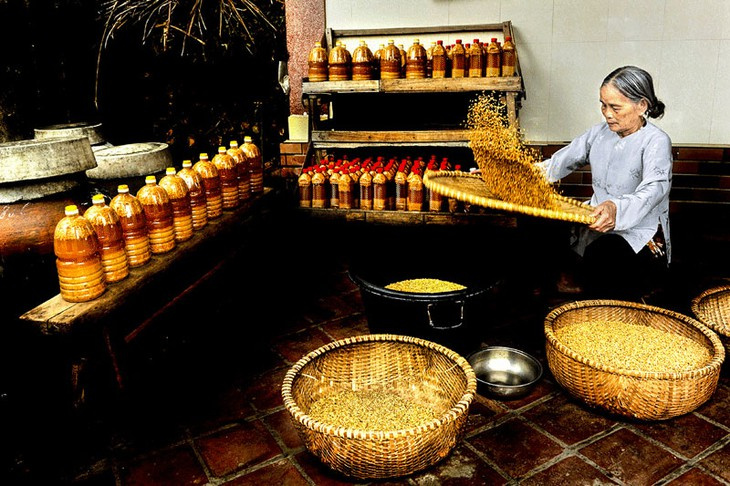Sauce of life
Sauce is a staple of almost every dish in Vietnam. A Vietnamese meal without particular sauce is considered
A: Welcome to this week’s “Food delight” with a recipe to help you diversify your menu. We’re A and B, and we’re always happy to be here to share some recipes with you. B: Hello, you guys. If you’ve ever been to Vietnam, you know that the abundance of fermented condiments in this country is really amazing. Besides the famous fish sauce and shrimp paste, another common condiment in many Vietnamese households is “tuong”.
A : “Tuong” is a kind of fermented bean paste made from soybean, which is low in fat and calories and high in protein, fiber, and essential vitamins and minerals.
B: Making “tuong” requires technique and patience. The techniques for making this traditional sauce are handed down within families. Each family has its own secrets for making tuong delicious. A: The ingredient list is short, the items are simple and inexpensive, and yet the flavors are delectable. Mrs. Tran Thi Thuy of Hung Yen province, who has 10 years experience making and selling “tuong”, tells us how “tuong” can be made at home. “To make good ‘tuong’, the soy beans should be selected carefully, washed, and dried in the sun before being roasted into flakes. Put the soy flakes in a clay jar with water and let them sit for a week with a lid on. Then prepare a mold using glutinous rice. Wash the rice carefully, steam it, and spread the rice on a thin bamboo basket covered by longan leaves. It will take at least a week for fungi to transform the rice into a powdery mixture with a nice golden color and a sweet taste. It is important to keep track of the mold as it develops on the rice, as sometimes other toxic types of fungi could develop as well, which will need to be removed.”
A: Each family has their own way to make the mold, which is the most difficult and tedious part of the manufacturing process. The basic principle is to let the fermented rice generate heat and create ideal conditions for the fungi to grow.
B: Thuy says the rice should be cooked with less water than usual. The fermentation process will take approximately 7 to 10 days. Some people insist the sauce is more delicious if it is made with rain water. A: When the rice mold is fully developed, it is put into jars, and the fermentation process is continued for at least 15 to 20 more days to create the final product – fermented soybean paste. “Salt is an indispensable ingredient. You should add the proper amount of salt to the jars to ensure good flavor and long storage time. The result is salty, sweet fermented soybean. ‘Tuong’ can be added to braised fish or braised duck, used as a dipping sauce for boiled morning glory, a kind of spinach grown widely in Vietnam, or used as a condiment in many vegetarian dishes,” Thuy said.
A: It takes less time to make soy sauce in the summer and more time in the winter, according to Thuy, so if you don’t have good technique, it will be impossible to make soy sauce during the winter, when it usually takes a month to make a batch.
B: In Vietnam, fermented soybean jam is mainly used as dipping sauce for dishes served with rice, such as tofu and boiled vegetables. This traditional jam is also served with Vietnamese steamed rice cake, a popular snack sold in rural markets.
A: In the past, every household stored several jars of soy sauce to eat all year round. Nowadays, tuong can be found in almost every market or supermarket nationwide, as well as in Vietnamese grocery stores overseas.
B: If you try making tuong at home, let us know! Leave a comment, and don’t forget to tag a photo on Facebook at VOV5 English Service, hashtag VOV#FOODDELIGHT#ICANCOOK#.
A: We’d love to see what you come up with. Cheers, friends!

